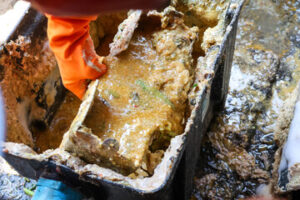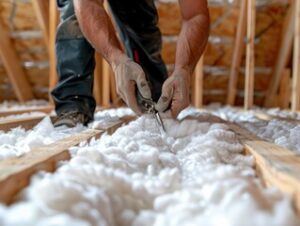Grease Trap Perth is essential to kitchen cleanliness, ensuring food safety and customer satisfaction. Keeping grease traps clean helps avoid unpleasant odors, plumbing problems and unnecessary costs from drain backups and overflows.

The 3 main types of grease traps are passive hydromechanical, automatic, and gravity systems. Automatic systems, known as AGRUs (automatic grease removal units), use principles similar to traditional passive traps but reheat and skim FOG on a programmed schedule, eliminating the need for operators to measure or check grease levels manually.
FOG (fats, oils, and grease) buildup is a major problem for commercial kitchens. When poured down drains, it can block sewer systems and cause waste treatment facilities to overflow. A grease trap, also known as a grease interceptor, helps prevent this by separating cooking grease from wastewater before it enters the sewer system.
Choosing the right grease trap can save you money and headaches down the road. The size of the grease trap you need depends on the type and number of dishes your restaurant prepares. A deli serving soups and salads will need a smaller grease trap than a fast food joint producing fries and burgers on a regular basis.
There are several types of grease traps, each with its own upfront cost and maintenance requirements. Traditional passive systems are one of the most popular options for small establishments because they’re inexpensive and easy to maintain. These traps collect a thin layer of grease on the bottom that must be removed manually on a scheduled basis, often by a pump truck.
Modern hydromechanical grease traps are more expensive but more efficient. They have a sturdier design that resists dents and corrosion, which extends their lifespan. These units are more flexible in terms of sizing and can accommodate multiple sinks. They are typically located underneath the kitchen sinks but can be placed elsewhere in the facility as well. Some grease traps even include an in-sink disposal unit, allowing the FOG to be emptied directly into the sewer system without needing to be pumped out.
It’s important to have your grease trap installed by a licensed plumber so you can be sure it’s correctly sized and properly positioned. It should be located as close as possible to the kitchen sinks and any other appliances that produce grease, like a deep fryer. It should also be within reach for regular cleaning and maintenance. A standard plumbing industry rule is to have your grease trap cleaned as soon as it’s a quarter full of FOG materials.
Despite following your grease trap vendor’s recommendations for cleaning and jetting, it’s still possible for your system to develop issues. A photo of the inside of your grease trap can help your vendor identify problems and make the necessary repairs before they become a bigger issue down the road.
Installation
Depending on the size and type of grease trap that you choose, it’s important to install it correctly. An improperly installed or maintained grease trap can create a big mess that will damage your establishment and the local sewer system. That’s why it’s so important to consult a qualified commercial plumber when installing your grease trap.
Grease traps are designed to separate fats, oils and grease (FOG) from wastewater, preventing them from entering municipal sewer systems and causing blockages. They work by intercepting incoming grease, which is typically poured directly down drains from sinks and dishwashers, before it has the chance to cool down and solidify, which can then combine with other disposed waste to block drainage pipes.
The FOG in wastewater is a major source of thousands of sanitary sewer overflows that occur across the country every year, affecting public water supplies and environmental health. This is why it’s so important for restaurants and other food service establishments to use a properly installed and maintained grease trap to keep FOG out of the sewer system.
During installation, it’s critical to have your grease trap sized appropriately for your establishment’s FOG flow rate. A reputable commercial plumber will be able to help you determine the proper sizing for your grease trap, taking into account the amount of wastewater your establishment produces as well as other factors like your location and kitchen layout.
Once the grease trap is installed, it must be properly maintained and emptied on a regular basis to ensure it functions as intended. A clogged grease trap can cause wastewater to back up into your kitchen, creating a hazard for employees and customers. It can also affect the integrity of your plumbing system and lead to costly repairs or replacements.
A properly installed grease trap/grease interceptor will be connected to your plumbing system, with a drain line running to it from each sink and a valve at the outlet that is opened and closed on a scheduled basis to empty the trap of its contents. This maintenance is necessary because the accumulated FOG will eventually escape from the trap if it’s not regularly pumped out.
Maintenance
It’s important to regularly check and clean a grease trap. This will help to ensure that the grease does not get into the sewer system, where it can cause blockages. Also, it will prevent the unpleasant odors that can result from overflowing and clogged traps. A clogged trap can also cause wastewater to backup into the restaurant, which is not good for business.
Grease traps can be cleaned in a variety of ways. Many restaurants use commercial products that are designed to break down the grease in the trap. These products can actually damage the grease trap, however, so they should only be used as directed. It is recommended to hire a professional company to handle the cleaning and maintenance of a grease trap. These professionals will be able to identify any problems with the trap and make necessary repairs. They will also be able to help with the disposal of the waste.
A clogged grease trap can be a major headache for any restaurant owner. Not only will it cause noxious odors that can affect customer perception of the restaurant, but it can also lead to plumbing issues that could cost a lot of money to repair. The best way to avoid these problems is to schedule regular grease trap cleanings.
During a grease trap cleaning, the baffles and walls of the trap should be scraped to remove any adhered grease buildup. It is also important to drain the trap completely after cleaning. This can be done by removing the lid of the trap and using a shop vac to suction out any remaining grease. Once the grease is removed, it should be disposed of in accordance with local laws.
Grease traps are essential for any commercial kitchen. They decrease the amount of fats, oils, and grease that enters the sewer system, preventing costly and unsightly sewer overflows. Grease traps must be properly maintained and pumped to keep them working efficiently. DAR PRO Solutions provides expert grease trap services, including cleaning and pumping, at competitive rates. Our trained technicians operate during non-peak hours to minimize disruptions and provide timely service. We also provide comprehensive records to comply with any regulatory requirements.
Chemical Treatment
A grease trap (or interceptor) is a plumbing fixture that separates fats, oils, and grease (FOG) from wastewater so it can be safely disposed of. Grease can cause significant problems if it is allowed to enter the sewer system, including blockages and costly repairs. Maintaining a grease trap can help prevent these issues, and a regular cleaning will ensure that the trap is working effectively.
Regular maintenance can be done by using chemical treatments or by having a professional company come out to clean the grease trap on an ongoing basis. A chemical treatment is an effective way to break down and digest FOG in the trap, which will allow the grease to pass through the drain lines without causing clogs. The chemicals in these products work by releasing bacteria that eat away at the waste, breaking it down into less-toxic components.
When a business uses a chemical treatment, it is important to follow the manufacturer’s instructions exactly to avoid damaging the equipment and compromising the effectiveness of the product. It is also important to have a plan for handling and disposing of the waste produced by the grease trap. This may include a program for collecting the grease, which could be reused for cooking or recycled into animal feed and other products.
Another option for dealing with the grease trap waste is to have it processed at an industrial or municipal waste water treatment facility. However, these facilities are often costly and can be difficult to find in some areas, and they sometimes charge additional tipping fees or surcharges for the processing of grease trap waste.
The most important thing a business can do to protect their grease trap and sewer line is to have it inspected on a routine basis. Regular inspections can help to identify potential problems and address them before they become serious, resulting in costly repairs or fines. It is also crucial to have a plan for cleaning and maintaining the grease trap, which should involve educating staff on proper waste disposal practices to prevent the build-up of food scraps or other items that can be trapped in the grease trap.

